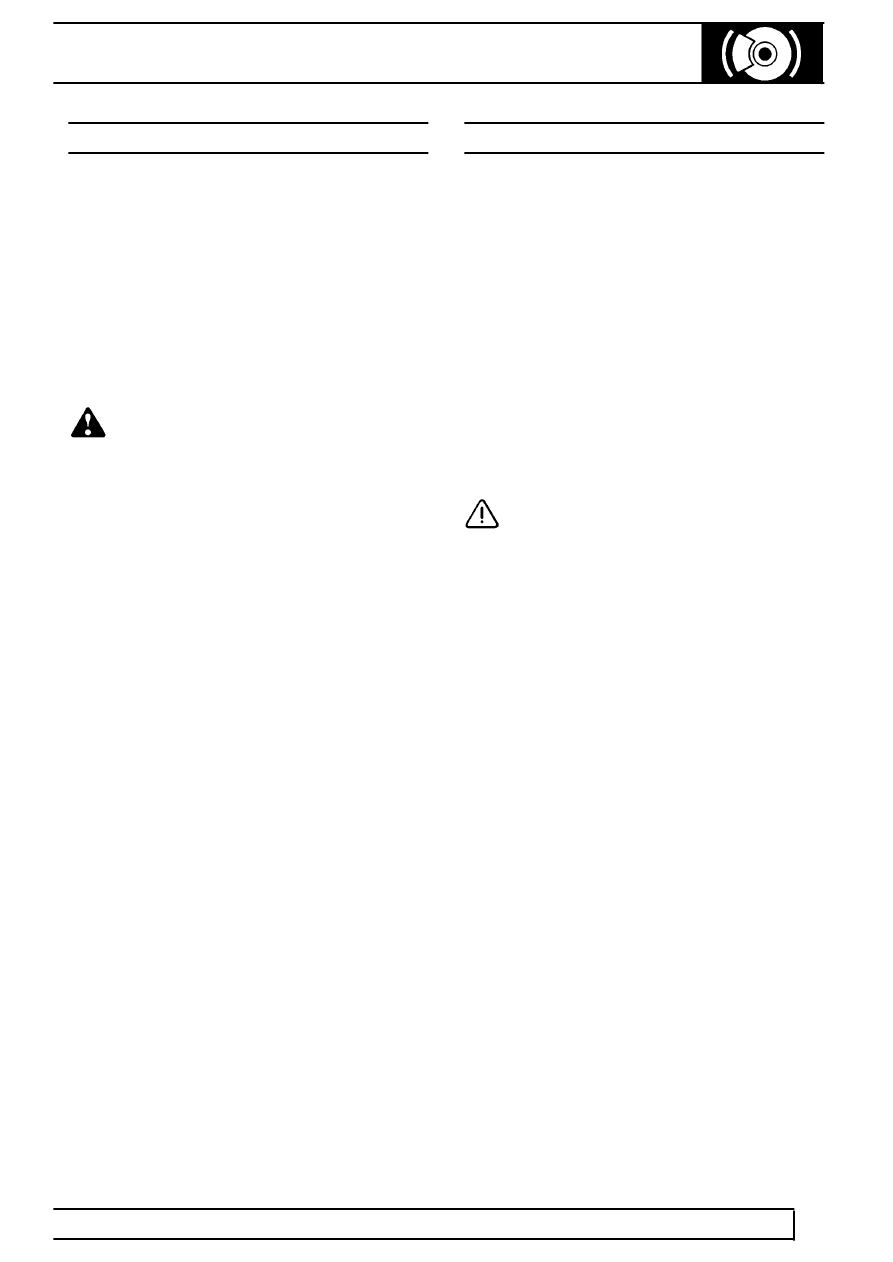Range Rover Classic

ABS
1
DESCRIPTION AND OPERATION
ANTI-LOCK BRAKE SYSTEM - ABS
CLAYTON DEWANDRE - WABCO POWER
ASSISTED HYDRAULIC BRAKE SYSTEM WITH
INTEGRATED ANTI-LOCK BRAKE SYSTEM - ABS
Introduction
The purpose of ABS is to prevent vehicle wheels
locking during brake application, thus maintaining
vehicle steerability and stability. This allows vehicle to
be steered whilst brakes are applied, even under
emergency conditions, and to avoid obstacles where
there is sufficient space to redirect the vehicle.
WARNING: ABS is an aid to retaining
steering control and stability while
braking.
•
ABS cannot defy the natural laws of physics
acting on the vehicle.
•
ABS will not prevent accidents resulting from
excessive cornering speeds, following
another vehicle too closely or aquaplaning,
i.e. where a layer of water prevents adequate
contact between tyre and road surface.
•
The additional control provided by ABS must
never be exploited in a dangerous or
reckless manner which could jeopardise the
safety of driver or other road users.
SYSTEM DESCRIPTION
The brake system is hydraulically power assisted with
an integrated, electronically controlled four channel
anti-lock brake system (ABS).
The use of a power assisted brake system means
that, during brake application, additional hydraulic
energy is provided by a hydraulic power unit.
This hydraulic power unit consists of an electrically
driven pump and an accumulator which stores
hydraulic energy in readiness for brake application. A
pressure switch controls the hydraulic pump to
maintain fluid pressure in accumulator.
The hydraulic system comprises two completely
independent circuits. The rear calipers and upper
pistons of front calipers form POWER CIRCUIT. The
lower pistons in front calipers form COMBINED
POWER/HYDROSTATIC CIRCUIT.
CAUTION: Thoroughly clean all brake
components, calipers, pipes and fittings
before commencing work on brake
system. Failure to do so could cause foreign
matter to enter system and damage seals and
pistons, which will seriously impair brake system
efficiency.
WARNING:
DO NOT use brake fluid previously bled from
system.
DO NOT use old or stored brake fluid.
ENSURE that only new fluid is used and that it is
taken from a clean sealed container.
DO NOT flush brake system with any fluid other
than recommended brake fluid.
Brake system must be drained and flushed at
recommended service intervals.
Fluid pressures of 180 bar (2600 lbf/in
2
) are
produced by hydraulic pump. It is essential that
procedure for depressurising system is carried
out where instructed.
